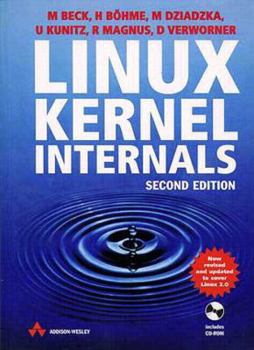White Paper: Linux Kernel Internals (2nd Edition) by Robert Love
Abstract
This white paper provides a comprehensive overview of the Linux kernel internals, drawing insights from Robert Love's second edition of "Linux Kernel Internals." The paper explores the core components, subsystems, and processes that govern the operation of the Linux kernel. It delves into the key concepts, data structures, and algorithms that underpin the kernel's functionality, offering a deep understanding of its inner workings.
Introduction
The Linux kernel is the heart of the Linux operating system, managing hardware resources, processes, memory, and other fundamental system components. Understanding its internals is essential for system administrators, developers, and anyone interested in the intricacies of operating system design. This white paper aims to provide a clear and concise exploration of the Linux kernel internals, based on the insights presented in Robert Love's second edition.
Core Components and Subsystems
- Process Management:
- Process creation, termination, and scheduling.
- Task states, context switching, and process synchronization.
- Memory management for processes, including virtual memory and page tables.
- Memory Management:
- Physical and virtual memory allocation and deallocation.
- Page faults and page replacement algorithms.
- Memory protection and access control.
- File Systems:
- Ext4, XFS, and other common file systems.
- File system operations, including creation, deletion, and modification.
- Disk I/O and block device management.
- Interrupts and Exceptions:
- Hardware interrupts and software exceptions.
- Interrupt handling and context switching.
- Exception handling and error recovery.
- Device Drivers:
- Character, block, and network device drivers.
- Driver architecture and device registration.
- Device I/O and interrupt handling.
- Networking:
- TCP/IP protocol stack implementation.
- Network device drivers and packet handling.
- Network sockets and socket programming.
- Virtualization:
- Kernel virtualization and containers.
- Hypervisor architecture and guest operating systems.
- Virtualization performance and resource management.
Key Concepts and Data Structures
- System Calls: The interface between user-space applications and the kernel.
- Task Structures: Data structures representing processes and threads.
- Page Tables: Mapping between virtual and physical memory addresses.
- Inodes: Data structures representing files and directories.
- File Descriptors: Handles for open files and devices.
- Spinlocks and Semaphores: Synchronization primitives for protecting critical sections.
References
- Love, Robert. Linux Kernel Internals (2nd Edition). Addison-Wesley Professional.
- Corbet, Jonathan, et al. Linux Kernel Newbies Guide. https://lwn.net/
- Kernel.org:
Conclusion
This white paper has provided a comprehensive overview of the Linux kernel internals, drawing from the insights presented in Robert Love's second edition. By understanding the core components, subsystems, and key concepts, readers can gain a deeper appreciation for the complexity and sophistication of the Linux kernel. This knowledge is invaluable for system administrators, developers, and anyone interested in the inner workings of operating systems. Contact ias-research.com for details.



